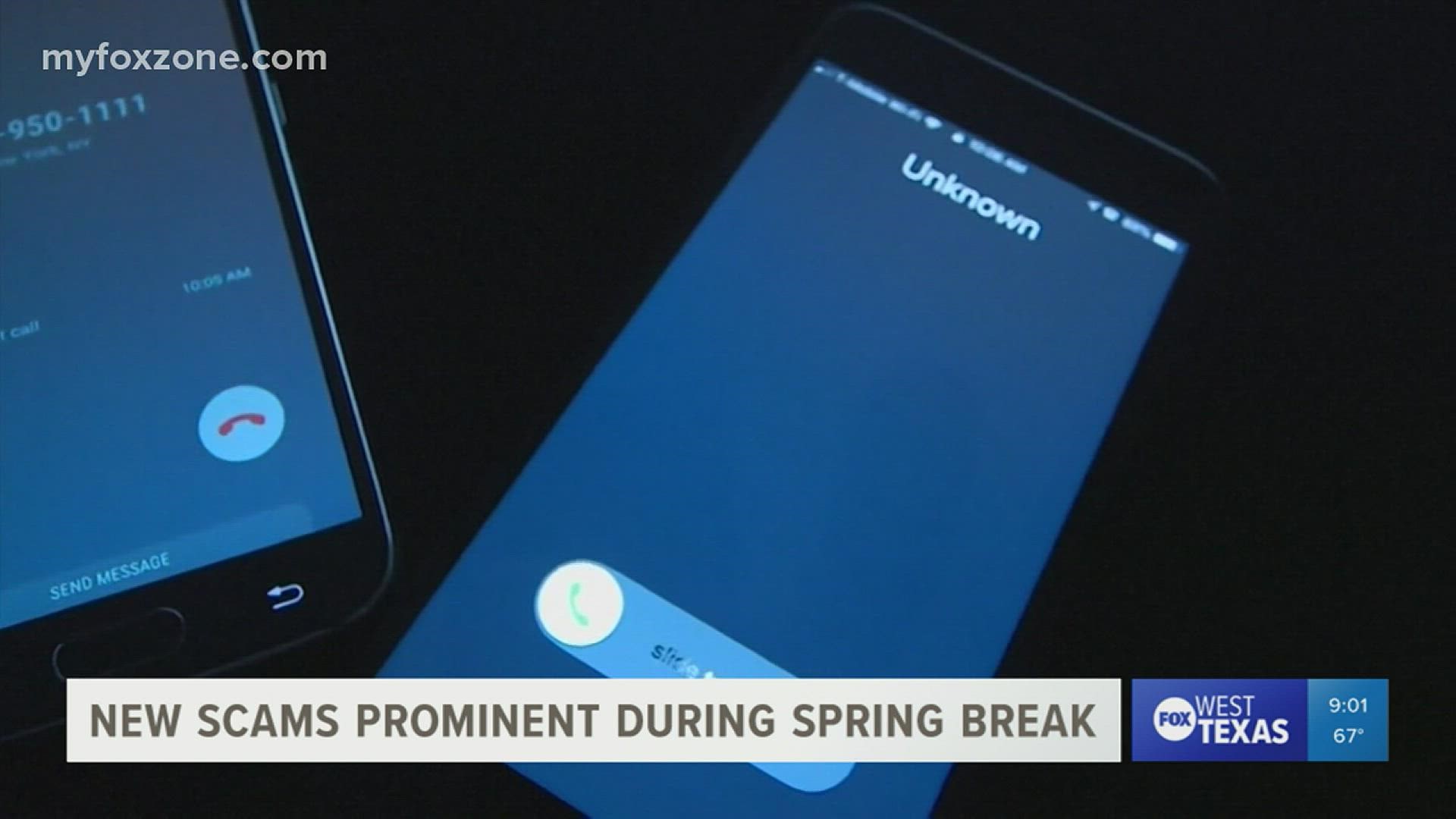SAN ANGELO, Texas — Scammers have gotten more clever and even more dangerous. A new scam the San Angelo Police Department wants people to avoid is the "virtual kidnapping" scam.
"Virtual kidnapping" is when a victim is told, over the phone, that his or her family member has been kidnapped. Then, through deception and threats, criminals coerce victims to pay a ransom. The criminals also threaten harm to the party(s) if they call law enforcement or alert authorities. No one is physically kidnapped in these schemes, but they are often traumatic for everyone involved.
The Federal Bureau of Investigation (FBI) says on average, the family sends thousands of dollars to the scammers before contacting law enforcement.
Spring Break is when con artists commonly attempt this scam because of large sums of people traveling in and out of the country.
Callers sometimes representing themselves as members of a drug cartel or corrupt law enforcement, will typically provide the victim with specific instructions to ensure safe “return” of the allegedly kidnapped individual.
The instructions usually involve demands of a ransom payment. Most schemes use various techniques to instill a sense of fear, panic and urgency in an effort to rush the victim into making a very hasty decision. Instructions usually require the ransom payment to be made immediately and typically by wire transfer or prepaid credit cards. The schemes involve varying amounts of ransom demands, which often decrease at the first indication of resistance.
If you receive a phone call from someone who demands payment of a ransom for a kidnapped victim, the following should be considered:
Stay calm.
Try to slow the situation down.
Avoid sharing information about you or your family during the call.
Request to speak to the victim directly. Ask, “How do I know my loved one is okay?”
Request the kidnapped victim call back from his/her cell phone
Listen carefully to the voice of the kidnapped victim if they speak and ask questions only they would know.
If they don’t let you speak to the victim, ask them to describe the victim or describe the vehicle they drive, if applicable.
While staying on the line with alleged kidnappers, try to call the alleged kidnap victim from another phone.
Attempt to text or contact the victim via social media.
Attempt to physically locate the victim.
To buy time, repeat the caller’s request and tell them you are writing down the demand, or tell the caller you need time to get things moving.
Don’t directly challenge or argue with the caller. Keep your voice low and steady.
If you have any questions about whether the call is an extortion scheme or a legitimate kidnapping, contact your nearest FBI office or call 9-1-1 immediately.
Also, look for the following possible indicators:
Calls are usually made from an outside area code
May involve multiple phone calls
Calls do not come from the kidnapped victim’s phone
Callers go to great lengths to keep you on the phone
Callers prevent you from calling or locating the “kidnapped” victim
Ransom money is only accepted via wire transfer service or prepaid credit cards such as Visa or GreenDot.

